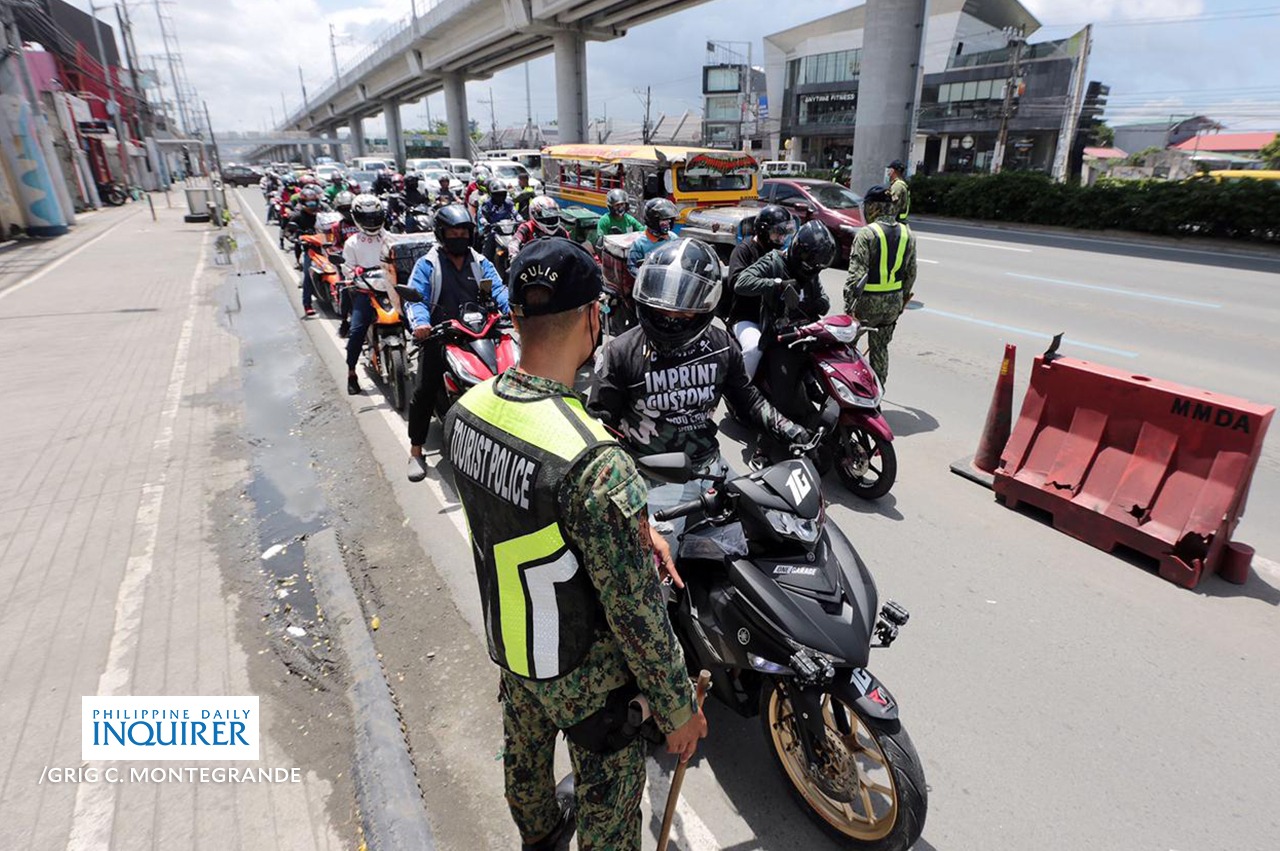COVID-19 spread slows down in 3 regions

INQUIRER FILE PHOTO/GRIG C. MONTEGRANDE
The Department of Health (DOH) on Thursday said the rate of increase of COVID-19 cases in Metro Manila was slowing down, thanks to the “upscaled” vaccination drive, granular lockdowns, the enforcement of health protocols, and two weeks of enhanced community quarantine (ECQ) followed by a modified ECQ.
The DOH reported 16,621 new infections nationwide, down from the new record high of 22,366 cases recorded last Monday.
Speaking at a Palace briefing, DOH-Epidemiology Bureau Director Alethea de Guzman said the seven-day moving average of cases in the National Capital Region (NCR) was also flattening compared to previous weeks.
“It’s still rising but not as fast as we’re previously seeing,” she said, adding that the previous week saw an average of 4,632 cases a day, which was only about 500 more than the 4,146 daily average cases recorded the week before.
Alert level 4
She said the slowdown was also observed in Calabarzon and Central Luzon, two regions adjoining the NCR.
Article continues after this advertisementOverall, however, the three regions, along with eight others, remain at high-risk levels, with 87 provinces and cities under alert level 4.
Article continues after this advertisementDe Guzman said all local governments in Metro Manila are still at high risk in terms of the average daily attack rate. Most cities in the metropolis are also at high risk in terms of health-care utilization rate, with the exception of Caloocan, Manila and Parañaque which are at moderate risk.
The independent OCTA Research Group also said on Thursday that while cases remained on the rise, the increase in daily new cases may begin to slow down by the third week of the month.
The reproduction number, or the number of persons who can be potentially infected, has eased to 1.39, which is below the critical level of 1.4. A reproduction number of less than 1 indicates that transmission is slowing down.
The incidence rate or average daily attack rate in Metro Manila was 33.2 per 100,000 population.
The hospital bed occupancy for COVID-19 patients in Metro Manila stood at 69 percent while ICU occupancy was 71 percent, it said.
“Based on current trends, it is possible that the reproduction number in the NCR may decrease below 1 by the third week of September,” OCTA Research said in a statement.
Delta in BARMM
“Until then, we should expect new cases to continue to increase, albeit at a slower growth rate,” it added.
In her presentation, De Guzman said a 130-percent, two-week growth rate in NCR slowed down to just 46 percent. In Calabarzon, it was from 125 percent to 64 percent, and in Central Luzon, from 111 percent to 45 percent.
“We are happy with the lower number of cases. This is due to a combination of our interventions—from granular lockdowns and improved adherence to minimum to public health standards [and] of course, the more effective implementation of our PDITR (prevent-detect-isolate-treat-reintegrate) strategy and the last is the upscaling of the coverage of vaccination in NCR,” she said.
Authorities also confirmed that the Delta variant has been detected in the Bangsamoro Autonomous Region of Muslim Mindanao (BARMM), which means the highly contagious coronavirus mutation has been detected in all the country’s 17 regions.
Cynthia Saloma, the executive director of the Philippine Genome Center, said on Thursday that two samples analyzed from the BARMM were positive for the Delta variant.
Thursday’s 16,621 new cases brought the nationwide total to 2,020,484 since the start of the pandemic.
There were 148 more deaths, 66 of whom were previously tagged as recovered, for a death toll of 33,680.
At least 10,965 more cases were reported as recoveries, for a new total of 1,840,294.
Meanwhile, Presidential Adviser for Entrepreneurship Joey Concepcion reiterated his proposal to set up so-called vaccine bubbles, where fully inoculated persons are allowed more mobility.
He wanted the scheme tested in a Metro Manila local government unit with a high vaccination rate to see “if the model will work.”
If it works in that city, then it can also be implemented in the rest of capital region, he said.
“This is a reasonable consideration for us to constrict the mobility of the unvaccinated, as the only thing we want is to protect them and save their lives at all costs,” Concepcion said in a statement.
Other business leaders have supported Concepcion’s proposal, but Malacañang and the DOH remained unswayed as the size of the vaccinated population remained small.
Dr. Rabindra Abeyasinghe, the World Health Organization representative in the Philippines, also thumbed down the idea.
“The concept of bubbles for vaccinated people doesn’t actually hold true because you will continue to be at risk of getting infected. And if you are infected, you could infect other people,’’ he said in a recent forum.
For more news about the novel coronavirus click here.
What you need to know about Coronavirus.
For more information on COVID-19, call the DOH Hotline: (02) 86517800 local 1149/1150.
The Inquirer Foundation supports our healthcare frontliners and is still accepting cash donations to be deposited at Banco de Oro (BDO) current account #007960018860 or donate through PayMaya using this link.